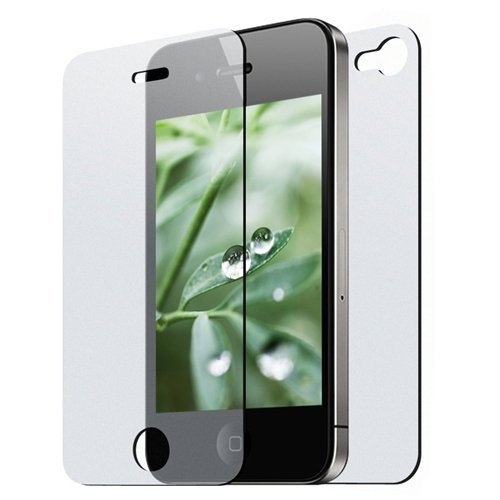How to Choose and Apply a Screen Protector for Your Smartphone
BY alina | 九月 18th, 2013 | 4 | 1
The smartphone screen has become larger and larger these years. The big screen brings many conveniences to our daily life and work. However, it also increases the probability of screen cracked. Therefore, it’s important to get a screen protector for your device. But there are so many screen protectors available in the market. Do you know how to choose the one suitable for your smartphone and how to apply a screen protector? Follow our guides and learn how to do these things.
Five Types of Screen Protectors
AR Screen Protector
The AR screen protector is also called as "high transparency anti-reflective screen protector". The AR is a synthesis material, which is divided into three layers. The silica gel is the adsorbed layer. The PET is the middle layer. The outer shell is the special processing layer. The highlight of this film is anti-glare and its light transmittance is over 95%, which enables the light inside the phone to maximum present to your eyes and will not have the big impact on the screen display effect. In addition, the AR screen protector is strongly friction resistant and scratch resistant because of its surface applying the special craft processing and its soft material.
Mirror Film
The effect of the mirror film is similar to that of the ordinary mirror, which utilizes the principle of the reflection ray. The special material in the mirror film makes it capable of reflecting light. Certain colors added in the application layer can improve the reflectivity. The name of the mirror film explicitly explains that it can be used as a mirror beside protecting your phone screen. However, the annoying problem is that it’s extremely hard to see the phone screen clearly in the sun because of the high reflectivity of the mirror film.
Matte Film
The matte film is the screen protector applying the frosted processing on its surface, which adds the roughness of the film. The roughness makes the external light diffuse when the light contacts with the screen protector, which can decrease the specular reflection and ensure a good users’ visual experience. What’s more, the matte screen protector can effectively reduce the fingerprint on the screen. However, the matte processing could sacrifice a part of light transmittance, which makes the phone internal radiance is lighter than that of the phone using the AR screen protector.
Scratch-resistant Screen Protector
The scratch-resistant screen protector is composed of the PET with special protecting glue, the PET release liner, and the PET protective film. The scratch-resistant screen protector is of high hardness, which is more scratch-resistant than other screen protectors.
Privacy Screen Protector
The privacy screen protector adopts the MICROLOUVER optical patent technology. This film limits the viewing angle of your phone, which ensures only the users can view the screen. With this screen protector on your phone, you don’t have to worry that the people beside you may peep your privacy when you check your email or private message. However, the drawback of this screen protector is the distortion and it will make your display appear hazy and video sharing difficult.
Different screen protectors have different advantages and disadvantages. You can choose one of the five screen protectors as your demands.
How to Apply a Screen Protector
Step 1
Clean your hands, and use the microfiber cloth (comes with the screen protector) to clean your screen from one side to others sequentially. Do not wipe it back and forth.
Step 2
Remove the back layer from the screen protector and align the protector at the top or bottom. Then apply the protector on the screen.
Step 3
Use the credit card to push bubbles out. Make sure there are no bubbles before you use your phone. Or you have to reapply the screen protector.
You may also like:












